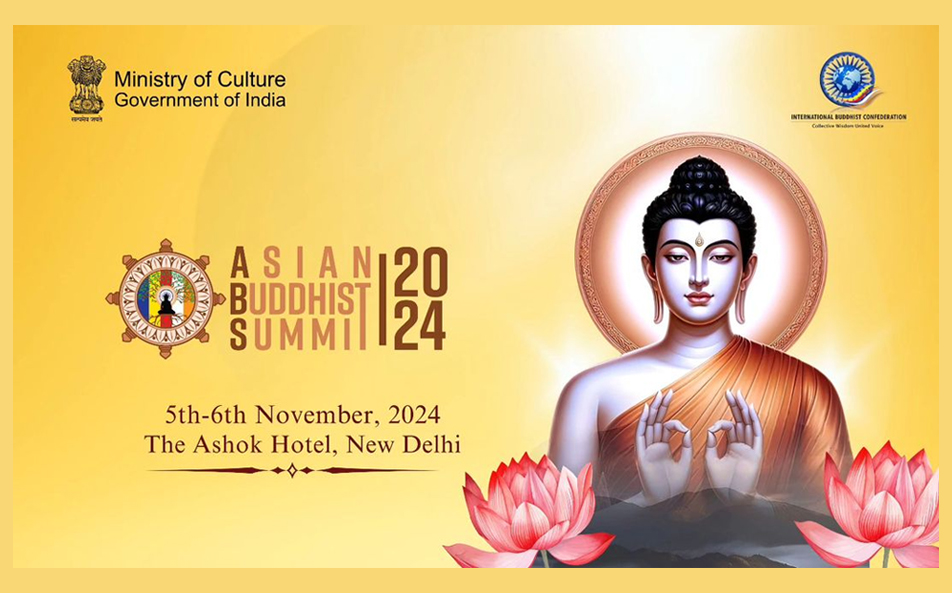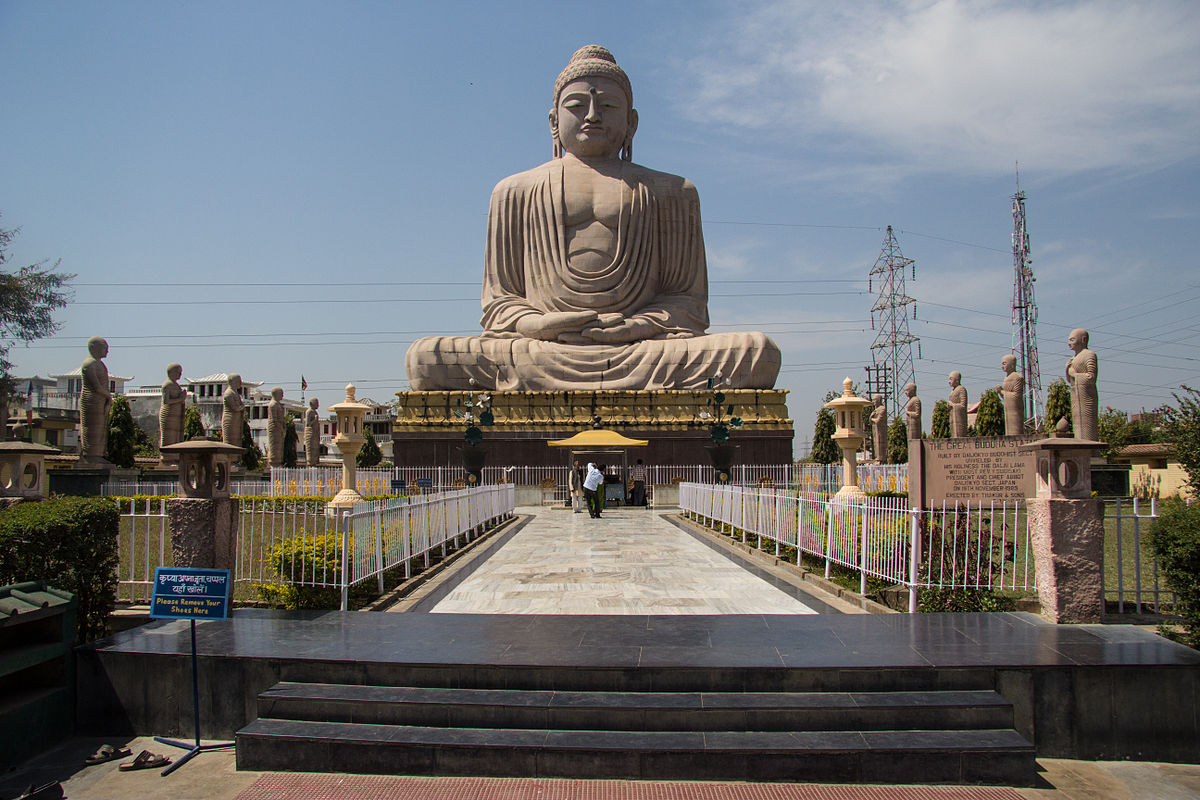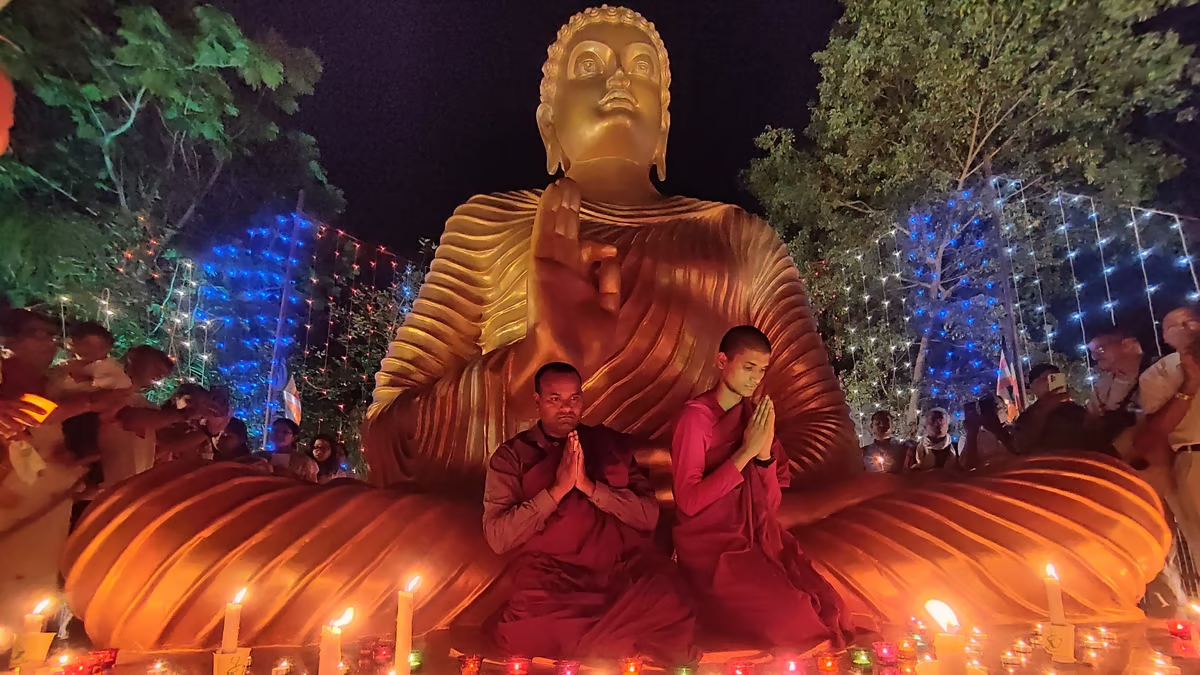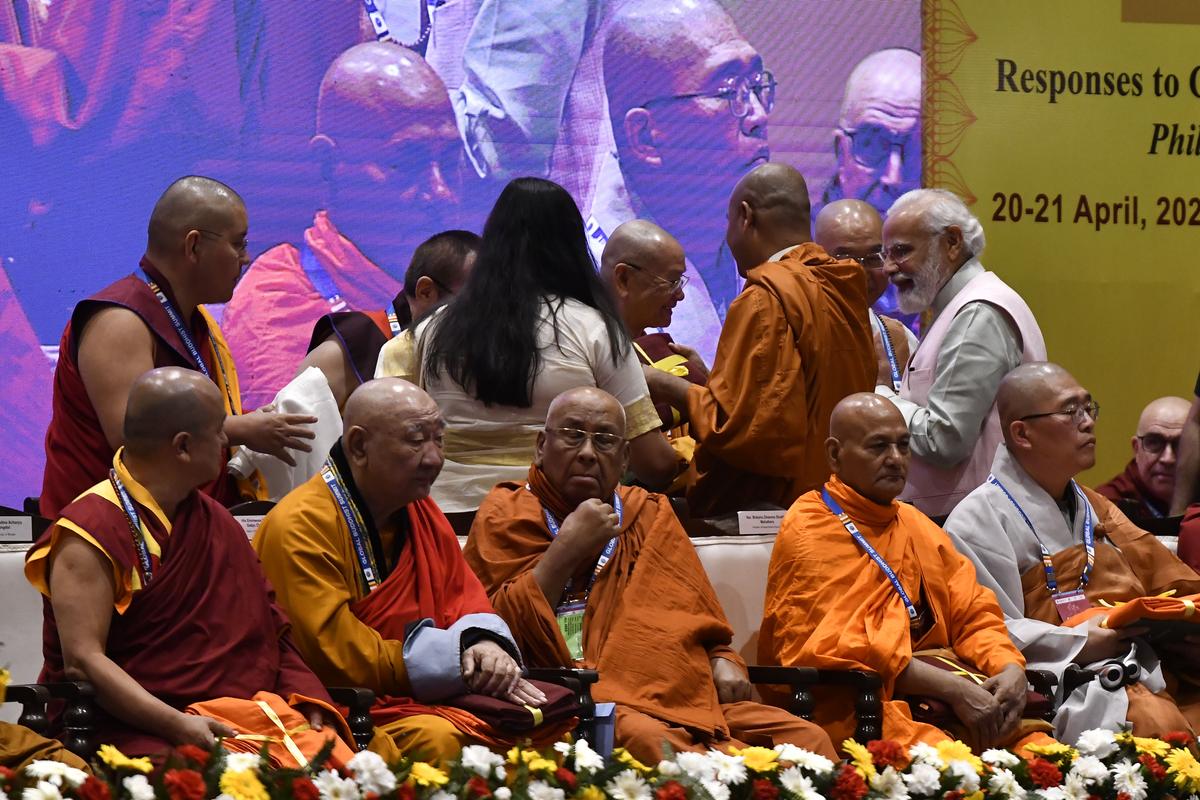
The United Indian

Buddhism has long flourished in India, a country rich in religious traditions and cultures. This long-standing custom not only prospered domestically but also stretched to other nations. Marking a historic moment in Asia's spiritual journey, the First Asian Buddhist Summit (ABS) is being held in New Delhi from November 5–6 by the Ministry of Culture, Government of India, in association with the International Buddhist Confederation (IBC), to commemorate this rich legacy. Renowned Sangha leaders, academics, and practitioners from all over the continent will participate in the summit, which is themed on "Role of Buddha Dhamma in Strengthening Asia."
It will address current issues facing the Buddhist community while promoting communication and understanding. The Buddha Dhamma journey officially began when Siddhartha Gautama became enlightened and started imparting his profound insights in the sixth century BCE.
Historical Origins and Evolution
The three main schools of Buddhism—Theravada, Mahayana, and Vajrayana—arose as a result of the Buddha's teachings being preserved and shared by his disciples after his Mahaparinirvana. The Buddha Dhamma was widely promoted by the Mauryan Emperor Ashoka (268–232 BCE), who showed how its teachings could improve society by fostering harmony, peace, and happiness. His rule was founded on the basics of Dhamma, and his edicts of rock and pillar serve as timeless reminders of how Buddhism spread throughout Asia even today. Several monastic schools developed as Buddhism spread, leading to a major schism by the first century CE. This divide resulted in the formation of Nikaya and Mahayana Buddhism, with Theravada being the only Nikaya school now in existence.
Geographical Spread and Cultural Impact
As Buddhism spread north through Central Asia into East Asia, becoming the Northern branch, and east to Southeast Asia, forming the Southern branch, its influence grew beyond India, adjusting to local cultures along the way. Throughout history, Buddhism has been able to satisfy the spiritual demands of many civilizations due to its versatility and the rise of multiple interpretations.
Buddhism's rich cultural and spiritual ties are reflected in its art, architecture, and legacy, all of which are extremely significant. Millions of people follow the teachings of Buddha, which are exquisitely represented in India's rich cultural legacy. Landmark historical sites like the Ajanta caves and the stupas of Sanchi are prime examples of both exquisite craftsmanship and profound teachings. We can improve intercultural understanding and appreciation among other groups by conserving and honoring Buddhist art and architecture. The rich and complex fabric of Buddhist philosophy and literature explores the nature of reality, the human predicament, and the road to enlightenment. For ages, people have been enthralled by the Buddha's knowledge as it is presented in these writings. The philosophy of Buddhism continues to be a timeless source of knowledge and comprehension thanks to these writings.
Significance of Buddhism in Modern India and Initiatives To Promote It
By fostering a common understanding of life, divinity, and societal norms, the teachings of Buddha, his disciples, and his followers have promoted unification throughout Asia. An essential component of India's cultural identity, the Buddha Dhamma supports the nation's strong foreign policy and productive diplomatic ties. In the current scenario, this legacy fosters international cooperation, respect, and understanding. In light of this, India has launched a number of programs, such as the Buddhist Circuit, to promote and protect this rich cultural heritage. Buddhist Circuit is one of the fifteen thematic circuits selected for development under the Ministry of Tourism's Swadesh Darshan—Integrated Development of Theme-Based Tourism Circuits Scheme. The Buddhist Circuit includes Kapilvastu and all other Buddhist sites in the nation.
Pali has received formal classical status on October 4, 2024, a designation that highlights its historical significance in the spiritual and cultural legacy of the region. Pali became an essential medium for Lord Buddha's teachings when he employed it to deliver his talks. The significance of Pali in upholding the Buddha Dhamma's teachings and the rich traditions of Buddhism is further supported by this classification.
The Vision of Asian Buddhist Summit 2024
Buddha Dhamma, India, and Asia are all deeply interconnected, and the Asian Buddhist Summit 2024 highlights this by emphasizing their complementary relationships. The importance of the occasion was underlined by the presence of the President of India as the Chief Guest. This summit, which focuses on inclusive, communal, and spiritual development in Asia, is in line with India's Act East Policy and Neighborhood First Policy. In keeping up with this goal, the summit will explore major topics that honor Buddhism's rich history and its continued significance in the area today.
In accordance with this vision, the following topics will be discussed at the Asian Buddhist Summit 2024 :
1. Buddhist Art, Architecture and Heritage
2. Buddha Cārikā and Dissemination of Buddha Dhamma
3. Role of Holy Buddhist Relics and its Relevance in Society
4. Significance of Buddha Dhamma in Scientific Research and Well-Being
5. Role of Buddhist Literature and Philosophy in 21st Century
The summit will include talks on these key topics. Also a special exhibition called India as the Dhamma Setu (Bridge) Connecting Asia has been organized during the event. The venue will also have other artistic displays. This gathering offers a rare chance to bring together various Asian viewpoints on Buddha's Dhamma. In order to improve the general well-being of humanity, the summit seeks to create a more compassionate, sustainable, and peaceful world via discussion that tackles current issues and honors Buddhist tradition.
Key Takeaways
As the curtains fall on this groundbreaking summit, its significance extends far beyond the confines of New Delhi. The Asian Buddhist Summit 2024 represents more than just a gathering of spiritual leaders and scholars – it's a testament to the enduring relevance of Buddha's teachings in our modern world. Through the exhibition "India as the Dhamma Setu," thoughtful discussions, and cultural exchanges, the summit has reinforced India's role as not just the birthplace of Buddhism, but as a continuing bridge of wisdom across Asia. As we face the challenges of the 21st century, the summit reminds us that the ancient teachings of Buddha Dhamma continue to light the path toward a more harmonious, compassionate, and interconnected Asia.
We believe there couldn't have been a better time for this summit in our rapidly changing world, where ancient wisdom offers guidance for contemporary challenges.
Read more in Recent Events
Jun 29, 2025
TUI Staff
Jun 27, 2025
TUI Staff
Jun 26, 2025
TUI Staff

Stay Tuned with The United Indian!
Our news blog is dedicated to sharing valuable and pertinent content for Indian citizens. Our blog news covering a wide range of categories including technology, environment, government & economy ensures that you stay informed about the topics that matter most. Follow The United Indian to never miss out on the latest trending news in India.
©The United Indian 2024














